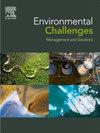Towards a digital model of the UKCS using Smart City concepts
Q2 Environmental Science
引用次数: 0
Abstract
The UK Continental Shelf (UKCS) is a complex environment with an array of varied infrastructure and interests from many different parties. This makes it difficult for stakeholders to make informed decisions that consider all of these disparate interests and their associated data streams. To help alleviate this we are building, as part of a suite of tools called the Smart Energy Basin, a model of the UKCS and its many datasets based on Smart City concepts. With data spread across many disparate sources, this model creates a more complete picture of the UKCS to help drive stakeholder engagement, more informed decision making, and policy development. This model comprises both 2D maps of the UKCS, and fully modelled 3D scenes of several demonstrator areas in the UKCS. A model of this type and to this extent, to the knowledge of the authors, has not been built before, and certainly not in 3D. These 3D scenes are built in the Marine Simulator at the National Decommissioning Centre, a full-physics simulator with data visualisation capabilities. As part of this we have developed automated tools for creating these 3D scenes from 2D maps, which encapsulate many datasets covering infrastructure, zoning, emissions, and marine traffic. This work is being undertaken within the Scottish Government’s Data for Net Zero (D4NZ) project, funded through its Energy Transition Fund.

利用智慧城市概念构建英国城市中心的数字模型
英国大陆架(UKCS)是一个复杂的环境,拥有一系列不同的基础设施和来自不同各方的利益。这使得涉众很难在考虑所有这些不同的利益及其相关数据流的情况下做出明智的决策。为了帮助缓解这种情况,我们正在构建一套名为“智能能源盆地”的工具,这是一个基于智能城市概念的英国cs模型及其许多数据集。由于数据分布在许多不同的来源,该模型创建了一个更完整的UKCS图像,以帮助推动利益相关者参与,更明智的决策制定和政策制定。该模型既包括英国大陆架的2D地图,也包括英国大陆架几个演示区域的完整建模3D场景。据作者所知,这种类型和这种程度的模型以前从未被建立过,当然也不是3D的。这些3D场景是在国家退役中心的海洋模拟器中构建的,这是一个具有数据可视化功能的全物理模拟器。作为这项工作的一部分,我们开发了自动化工具,用于从2D地图创建这些3D场景,其中封装了许多数据集,包括基础设施,分区,排放和海上交通。这项工作是在苏格兰政府的净零数据(D4NZ)项目中进行的,该项目由其能源转型基金资助。
本文章由计算机程序翻译,如有差异,请以英文原文为准。
求助全文
约1分钟内获得全文
求助全文
来源期刊

Environmental Challenges
Environmental Science-Environmental Engineering
CiteScore
8.00
自引率
0.00%
发文量
249
审稿时长
8 weeks
 求助内容:
求助内容: 应助结果提醒方式:
应助结果提醒方式:


